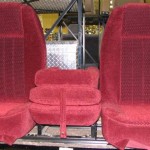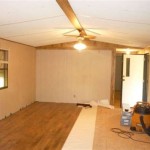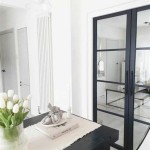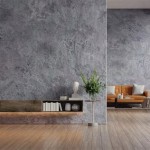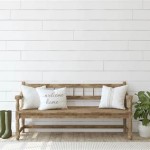Words to Describe Texture in Interior Designing: A Comprehensive Guide
Texture, a vital element in interior design, refers to the tactile and visual quality of a surface. It affects how a space is perceived and experienced, contributing to its overall aesthetic and ambiance. Employing descriptive language effectively is crucial for designers when communicating their vision to clients, collaborators, and suppliers. A rich vocabulary allows for precise articulation of the desired tactile and visual impact, leading to more successful design outcomes. This article provides a comprehensive guide to words used to describe texture in interior design, categorized for clarity and enhanced understanding.
The effective use of texture in interior design can elevate a space from ordinary to extraordinary. It adds depth, interest, and a layer of sensory experience that visual appeal alone cannot achieve. By strategically incorporating contrasting textures, designers can create focal points, establish visual hierarchy, and evoke specific moods. Smooth textures can convey sophistication and elegance, while rough textures can introduce a sense of rustic charm or industrial edge. The interplay of different textures is what ultimately defines the character of a space.
This guide explores various terms related to texture, organized into categories based on their primary focus. These categories include: Tactile Texture, Visual Texture, Material-Specific Texture, and Texture Effects. The goal is to furnish designers and enthusiasts alike with the language necessary to articulate the nuances of texture in interior design.
Tactile Texture: Describing the Sense of Touch
Tactile texture describes how a surface feels to the touch. These are words that directly relate to the physical sensation experienced when interacting with a material. This is especially important when considering furniture upholstery, flooring, and wall coverings.
Smooth: A surface that is even and without any noticeable bumps, ridges, or irregularities. Examples include polished marble, glass, and silk.
Rough: A surface that is uneven and has noticeable bumps, ridges, or irregularities. Examples include exposed brick, concrete, and unfinished wood.
Soft: A surface that yields easily to pressure and feels gentle to the touch. Examples include plush carpets, velvet, and down-filled cushions.
Hard: A surface that resists pressure and feels firm to the touch. Examples include stone countertops, metal furniture, and ceramic tiles.
Coarse: A surface with a rough, uneven texture, often with large, visible particles. Examples include burlap, heavy canvas, and textured plaster.
Fine: A surface with a smooth, even texture, with small, barely perceptible particles. Examples include linen, high-quality cotton, and polished wood.
Prickly: A surface that feels sharp and slightly irritating to the touch. Examples include some types of wool, sisal rugs, and surfaces with small, pointed elements.
Sticky: A surface that adheres to the touch, often due to residue or a coating. Examples include surfaces with un-cured paint, or materials with a natural resin.
Slippery: A surface that is smooth and offers little friction, making it easy to slide on. Examples include polished floors, glass, and some synthetic fabrics.
Grippy: A surface that offers good friction, preventing slipping. Examples include textured rubber flooring, non-slip mats, and surfaces with a slightly raised pattern.
Bumpy: A surface with raised areas or protrusions. Examples include pebble dash walls or certain types of textured wallpaper.
Nubby: A surface with small, rounded projections. Examples include certain types of upholstery fabrics or textured throws.
Fleecy: A surface that resembles wool fleece, soft and with a slightly irregular texture. Examples include fleece blankets or sheepskin rugs.
Scaly: A surface that resembles fish scales, with overlapping or layered elements. Examples include certain textured tiles or wall panels.
Visual Texture: Describing Perceived Texture
Visual texture refers to the illusion of texture created through patterns, colors, and light. It is perceived through sight rather than touch. Even if a surface is physically smooth, a carefully chosen pattern can create the impression of depth and texture.
Matte: A surface that is non-reflective and absorbs light, appearing flat and subdued. Matte finishes reduce glare and create a softer, more relaxed atmosphere.
Glossy: A surface that is highly reflective and shines brightly, creating a sleek and modern look. Glossy finishes can enhance the perception of space and add a touch of glamour.
Satin: A surface with a slight sheen, falling between matte and glossy. Satin finishes offer a subtle glow without being overly reflective.
Sheen: A general term for the degree of light reflected from a surface. Different types of sheen include eggshell, semi-gloss, and high-gloss.
Patterned: A surface decorated with a recurring design or motif. Patterns can range from simple geometric shapes to complex floral arrangements, adding visual interest and personality to a space.
Striated: A surface marked with parallel grooves or ridges, creating a linear texture. Striated textures can add a sense of movement and direction to a space.
Grainy: A surface with a visible wood grain pattern. Wood grain can range from fine and subtle to bold and pronounced, depending on the type of wood and finish.
Iridescent: A surface displaying a range of colors depending on the angle of light. Iridescent finishes add a touch of magic and sophistication.
Woven: A surface with a visible interlacing pattern, typically found in fabrics. Woven textures can add warmth and character to a space.
Mottled: A surface with irregular spots or blotches of color, creating a textured effect. Mottled finishes can add depth and dimension to walls or furniture.
Distressed: A surface that has been intentionally aged or worn to create a vintage or rustic look. Distressed finishes can add character and charm to a space.
Embossed: A surface with a raised pattern or design. Embossing can add a subtle tactile element to visual texture.
Material-Specific Texture: Describing Commonly Used Materials
Certain words are more commonly associated with specific materials used in interior design. Using these terms effectively helps create more vivid and accurate descriptions.
Wood: Grained, polished, rough-hewn, weathered, lacquered, varnished, knotty
Metal: Polished, brushed, hammered, oxidized, rusted, chrome-plated, matte
Fabric: Smooth, soft, coarse, woven, knitted, plush, velvet, corduroy, linen, silk
Stone: Polished, honed, rough, textured, tumbled, marbleized, granite, slate
Glass: Smooth, frosted, etched, textured, stained, blown, tempered, reflective
Ceramic: Glazed, unglazed, matte, glossy, textured, mosaic, terracotta, porcelain
Concrete: Smooth, rough, polished, exposed, textured, stamped, aggregate
Leather: Smooth, supple, distressed, pebbled, embossed, grained, tanned
Texture Effects: Describing the Impact of Texture
These words describe the overall effect texture has on a space, including the atmosphere and aesthetic qualities it contributes.
Inviting: Textures that make a space feel welcoming and comfortable, often achieved through soft materials and warm colors.
Sophisticated: Textures that evoke a sense of elegance and refinement, often achieved through smooth surfaces and luxurious materials.
Rustic: Textures that convey a sense of naturalness and simplicity, often achieved through rough materials and earthy colors.
Modern: Textures that create a sleek and contemporary look, often achieved through smooth surfaces, clean lines, and minimalist design.
Industrial: Textures that evoke a sense of rawness and functionality, often achieved through exposed materials like brick, concrete, and metal.
Playful: Textures that add a sense of fun and whimsy, often achieved through bold colors, patterns, and unexpected combinations.
Calming: Textures that promote relaxation and tranquility, often achieved through soft materials, muted colors, and natural elements.
Dynamic: Textures that create a sense of energy and movement, often achieved through contrasting materials, bold patterns, and varying levels of sheen.
Layered: The effect achieved by combining multiple textures to create depth and visual interest.
Contrasting: The effect achieved by juxtaposing textures that are significantly different, such as smooth and rough, or hard and soft.
Subtle: Textures that are understated and blend seamlessly into the overall design.
Bold: Textures that are prominent and make a strong statement.
By employing this comprehensive vocabulary, interior designers can more effectively communicate their ideas and create visually compelling and tactilely rich spaces. The skillful manipulation of texture, combined with precise descriptive language, leads to more successful and impactful design outcomes.

The Complete Guide To Use Textures In Interior Design Foyr

Interior Design Styles 101 The Ultimate Guide To Decorating In 2025 Decorilla

Interior Design Styles 101 The Ultimate Guide To Decorating In 2025 Decorilla

The Complete Guide To Use Textures In Interior Design Foyr

Interior Design Styles 101 The Ultimate Guide To Decorating In 2025 Decorilla

The Complete Guide To Use Textures In Interior Design Foyr

Interior Design Styles 101 The Ultimate Guide To Decorating In 2025 Decorilla

The Complete Guide To Use Textures In Interior Design Foyr

Interior Design Styles 101 The Ultimate Guide To Decorating In 2025 Decorilla

Interior Design Styles 101 The Ultimate Guide To Decorating In 2025 Decorilla
Related Posts



